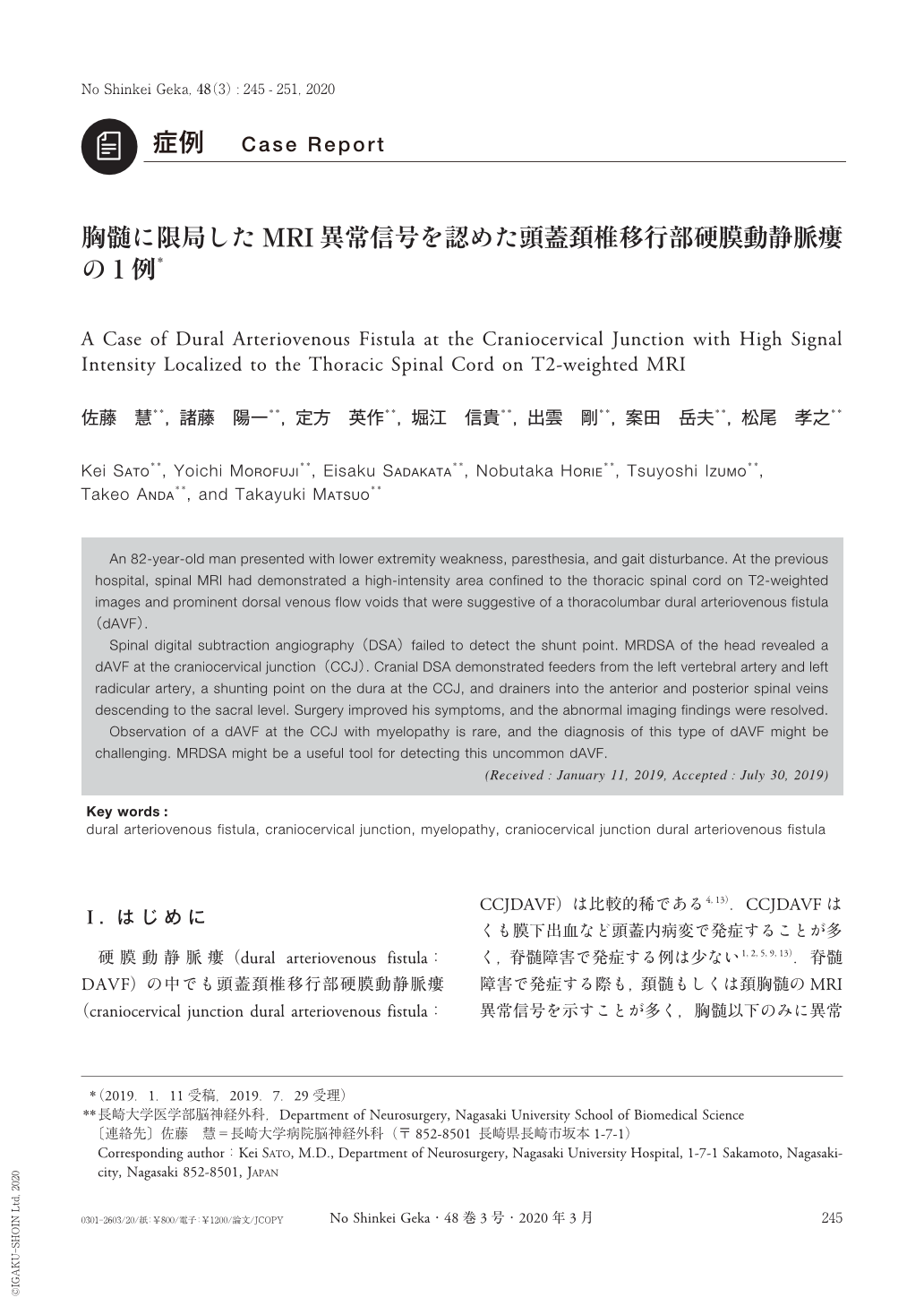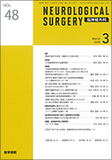Japanese
English
- 有料閲覧
- Abstract 文献概要
- 1ページ目 Look Inside
- 参考文献 Reference
Ⅰ.はじめに
硬膜動静脈瘻(dural arteriovenous fistula:DAVF)の中でも頭蓋頚椎移行部硬膜動静脈瘻(craniocervical junction dural arteriovenous fistula:CCJDAVF)は比較的稀である4,13).CCJDAVFはくも膜下出血など頭蓋内病変で発症することが多く,脊髄障害で発症する例は少ない1,2,5,9,13).脊髄障害で発症する際も,頚髄もしくは頚胸髄のMRI異常信号を示すことが多く,胸髄以下のみに異常信号を示す症例は非常に稀である.今回われわれは,胸髄に限局するMRI異常信号を示す脊髄障害で発症し,局在診断に苦慮したCCJDAVFの1例を経験したので報告する.
An 82-year-old man presented with lower extremity weakness, paresthesia, and gait disturbance. At the previous hospital, spinal MRI had demonstrated a high-intensity area confined to the thoracic spinal cord on T2-weighted images and prominent dorsal venous flow voids that were suggestive of a thoracolumbar dural arteriovenous fistula(dAVF).
Spinal digital subtraction angiography(DSA)failed to detect the shunt point. MRDSA of the head revealed a dAVF at the craniocervical junction(CCJ). Cranial DSA demonstrated feeders from the left vertebral artery and left radicular artery, a shunting point on the dura at the CCJ, and drainers into the anterior and posterior spinal veins descending to the sacral level. Surgery improved his symptoms, and the abnormal imaging findings were resolved.
Observation of a dAVF at the CCJ with myelopathy is rare, and the diagnosis of this type of dAVF might be challenging. MRDSA might be a useful tool for detecting this uncommon dAVF.

Copyright © 2020, Igaku-Shoin Ltd. All rights reserved.


